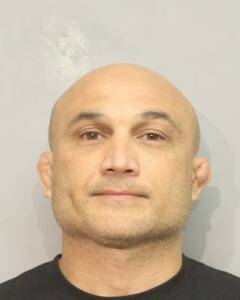As CEO of Bay Clinic, when I am asked, “What is it going to take to improve the health system of Hawaii Island?” I answer, “One shared community.”
On Jan. 10, Bay Clinic and Community First initiated a potluck gathering of the four primary care health centers in East Hawaii and their board members: Hilo Medical Center, East Hawaii Independent Physician Association, Bay Clinic, and Hui Malama Ola Na ‘Oiwi. There were also community leaders including Charlene Iboshi, Randy Kurohara and Toby Taniguchi who gave the opening and closing comments.
The purpose of the gathering was to discuss how health care can be provided to the community in the most effective manner. Discussions revolved around collaboration over competition, improving the quality of primary healthcare, and increasing access for all patients through partnerships.
As I pointed out, partnerships require trust and willingness in helping each other to fulfill their mission. Brandee Menino, CEO of HOPE Services, asked Dr. Mike Sayama, ED of Community First, to continue the dialogue on how access to primary care and specialty care can be improved without providers feeling others were taking their share of the market. It was a first step in making the invisible visible and raising an issue that could become disruptive.
The power of collaboration couldn’t be better exemplified than through the partnership between Bay Clinic and the Ob/Gyn Department at UH JABSOM in Honolulu. JABSOM has been providing full-time Ob/Gyn services at Bay Clinic since 2017. This collaboration ensures that Bay Clinic has a full-time board-certified Ob/Gyn at the Hilo Women’s Bay Clinic, which allows JABSOM to satisfy its mission of providing and improving services on neighbor islands while also providing access to Ob/Gyn services in East Hawaii.
Here’s an actual case example. Bay’s patient went to the ER for pelvic pain and was found to have an enlarged uterus of 20 cm, equivalent to a 5-month pregnancy! In initial follow-ups with Bay’s APRN and Ob/Gyn there was a suspicion for fibroids, which are quite common and thankfully not dangerous, but an MRI was done to be sure. Bay Clinic’s Ob/Gyn Dr. Khozaim recommended surgery. The patient had never been pregnant before and her uterus was very large, so a vaginal hysterectomy would have been impossible. Abdominal Hysterectomy through a large incision has been the standard in these situations.
JABSOM’s group of Ob/Gyns introduced Total Laparoscopic Hysterectomy (TLH) to Hilo Medical Center, a surgery that had never been done before in Hilo. Dr. Khozaim and his Hilo Medical Center colleague, Dr. Stickley, were able to complete the procedure and remove the very large uterus through only three small holes.
As a result, the patient was able to go home on the same day of surgery, whereas she would have stayed at least three days in the hospital as an inpatient for an abdominal hysterectomy. This decreased surgical risk for the patient and allowed for a much faster recovery. It also reduced costs because the patient did not have to fly to Honolulu for the surgery and didn’t spend any nights in the hospital.
Bay Clinic is well known for its Women’s Health program because of its exceptional service, minimal appointment wait times, and very experienced staff. As the third largest Federally Qualified Health Center in the state, we have plans for consolidating Hilo’s Bay Clinic offerings at our 2.4 acre parcel in downtown Hilo and are currently engaging in a partnership with the Keaau High School complex and other key state, county, and private stakeholders to construct a mega health center on their 17 acres of unused space on campus grounds. Services will include, but not limited to, preventive and primary care, case management, health education and outreach, pediatrics, adult medicine, women’s health, behavioral health, and dentistry.
The future looks bright for Bay Clinic as we make our vision of “one shared community” a reality.
This column was prepared by Community First, a nonprofit established to help the community respond to the health-care cost crisis and support initiatives that change health care from just treating disease to caring for health.





